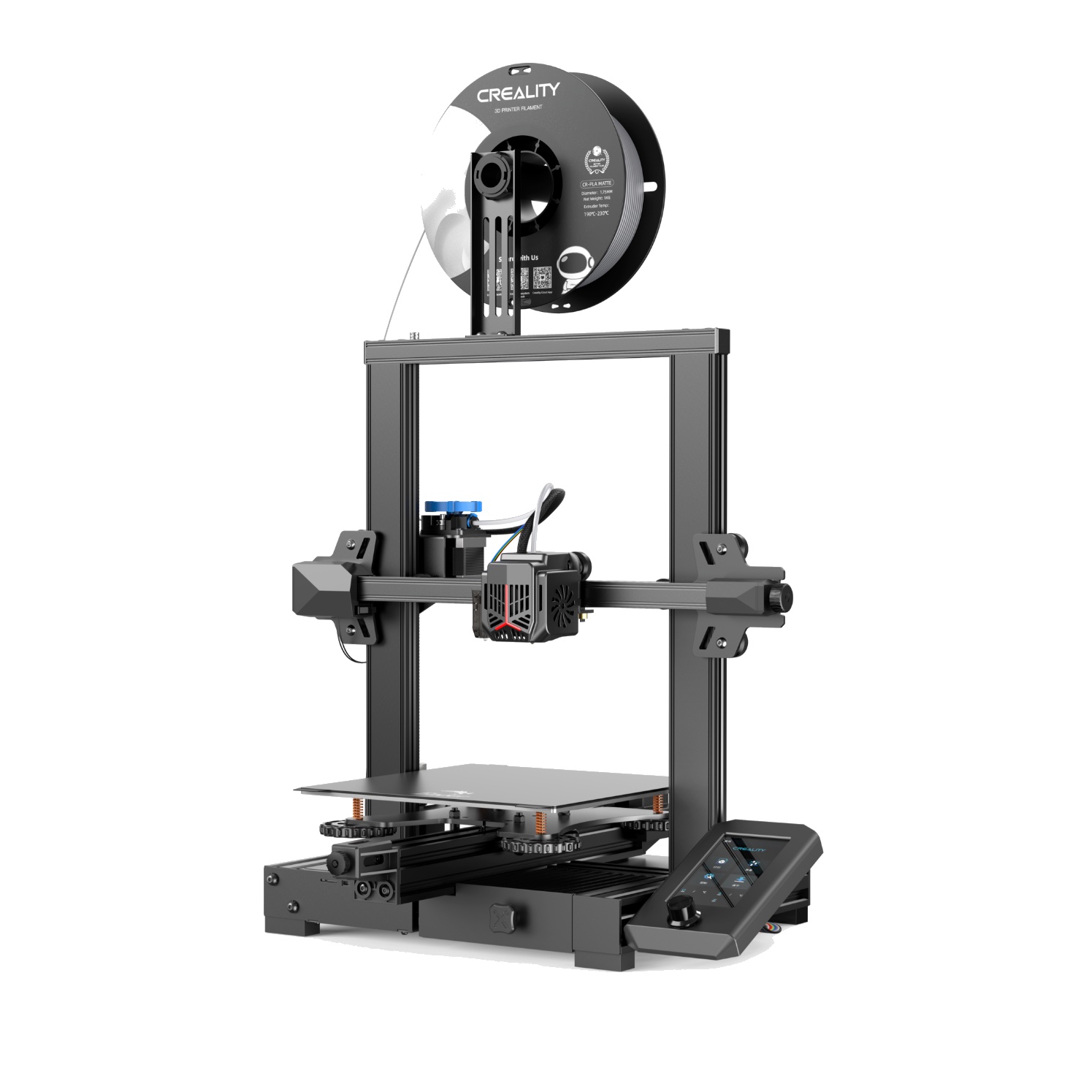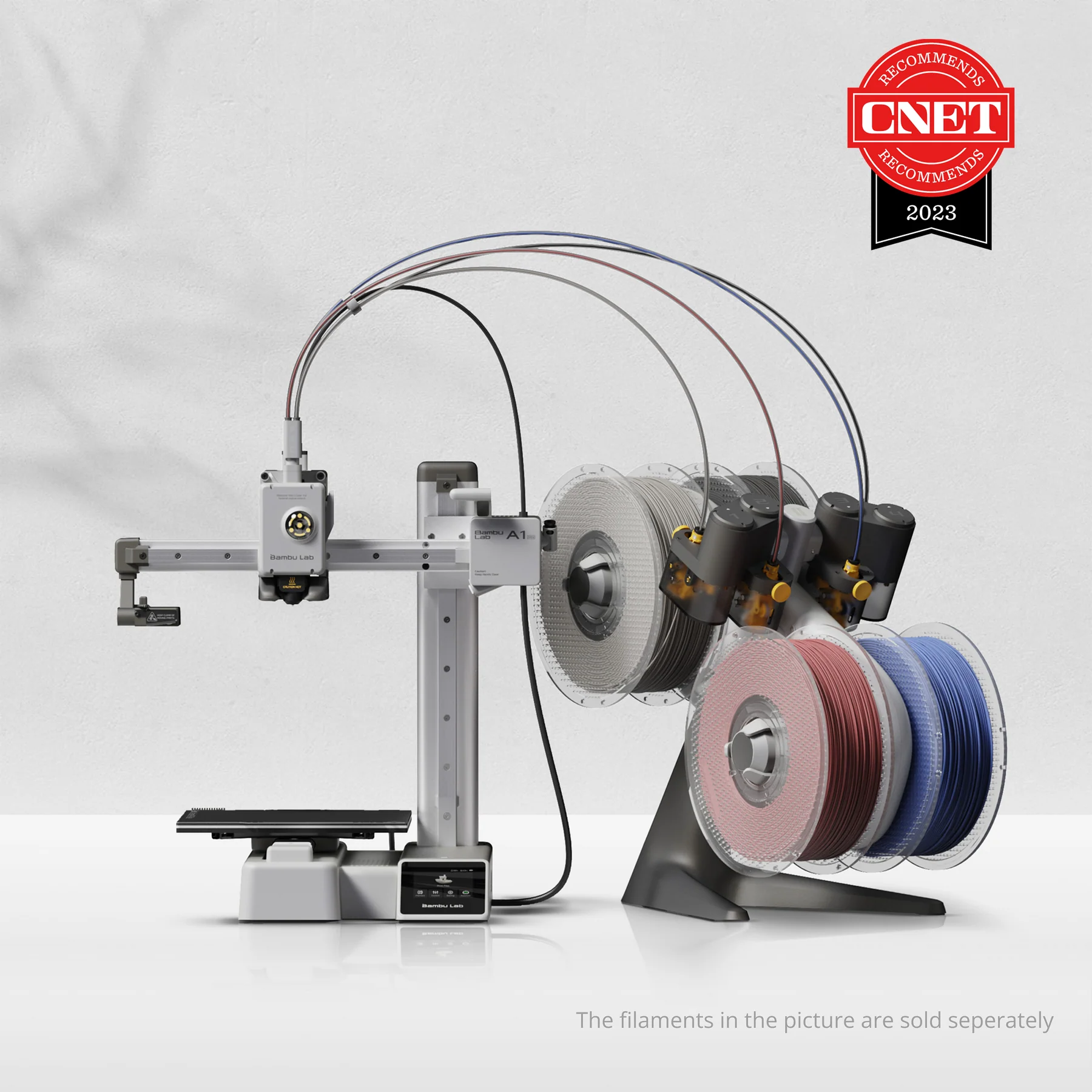Compare Ender 3 V2 Neo vs A1 Mini
Comparison between the best 3D printers
Choose the best 3D printer at the best price. The cheapest 3D printers are here.
Buy a 3D printer here with 3D Fila.
 |
 |
|
| Model | Ender 3 V2 Neo[BUY Ender 3 V2 Neo] |
A1 Mini |
| Printing Material | Filament | Filament |
| Buy Filament for Creality 3D Ender 3 V2 Neo | Buy Filament forBambu Lab A1 Mini | |
| Estimated price | $310,00 | $549,00 |
| Manufacturer | Creality 3D | Bambu Lab |
| Release Year | 2022 | 2023 |
| Print Volume [mm] | 220x220x250 | 180x180x180 |
| Printer Size [mm] | 438x424x472 | 315x347x365 |
| Weight [kg] | 9,8 | 5,5 |
| Power Loss Recovery | YES | YES |
| Enclosed printer | NO | NO |
| Bed Leveling | Automatic | Automatic |
| Filament End Sensor | YES | YES |
| Bed type | Heated | Heated |
| Power supply system | Bowden | Direct Drive |
| Standard nozzle | 0,4 | 0,4 |
| Maximum Nozzle Temperature [°C] | 260 | 300 |
| Maximum Bed Temperature [°C] | 100 | 80 |
| Maximum printing speed [mm/s] | 80 | 500 |
| Filament holder | YES | YES |
| Camera for supervision | NO | NO |
| Recommended filaments | PLA, PETG | PLA, PETG, TPU, PVA |
| Recommended slicers | Cura, Simplify, Slic3r, IdeaMaker | Bambu Studio, Super Slicer, Cura, Prusa Slicer, Orca |
| Maximum Resolution [mm] | 0,1 | 0,1 |
| Processor | 4.2.2 mainboard | 32-bit Silenciosa |
| Display | Display touchscreen 4,3'' | Touchscreen 2,4'' |
| Power Supply | 150 W | |
| Connectivity | SD / USB | Wifi, Bambu bus, Cartão SD |
| Operating systems | Windows, Mac, Linux | Windows, Linux, Macbook |
| Date of registration in the system | 2022-12-09 | 2024-04-10 |
| Release date | 2022 | 2023 |
| Extra features | The Ender 3 V2 Neo printer stands out for its automatic bed leveling with the CR Touch system, ensuring high-quality initial layers. It features an all-metal Bowden extruder for increased durability and improved filament handling. Its flexible, PC-coated magnetic build plate makes it easy to remove prints and is durable and easy to clean. It also includes a new user interface with model preview and an updated gantry design. The Ender 3 V2 Neo maintains the same build volume and temperatures as the previous version, supporting popular filaments such as PLA and ABS. It features a quiet 32-bit mainboard and additional features such as a filament sensor, print recovery, simple 3-step assembly, an integrated toolbox, and belt tensioners. | The Bambu Lab A1 Mini stands out not only for its impressive speed and automatic calibration, but also for its multi-color printing capability thanks to AMS Lite. This innovative system makes multi-color printing easy, making it accessible to everyone. AMS Lite, specific to the A1 Mini, supports up to four different materials simultaneously, providing creative freedom without complications. With comprehensive sensors for energy monitoring and recovery, a camera for timelapses and Wi-Fi control, the A1 Mini and AMS Lite together offer an intuitive and advanced 3D printing experience, ideal for materials such as PLA, PETG and TPU, and designed for simplicity and fast maintenance with quick-change nozzles. |
| Support for multiple colors and materials (AMS and CFS) | NO | YES |
Notes * |
||
| Cost-benefit | 7 / 10 | 7 / 10 |
| Hardware | 2.8 / 10 | 4.8 / 10 |
| Tela | . | . |
| Print volume | 3 / 10 | 3 / 10 |
| Performance | 0 / 10 | 4 / 10 |
| [BUY Ender 3 V2 Neo] |
Conclusion |
| In comparing the Creality 3D Ender 3 V2 Neo and the Bambu Lab A1 Mini, several factors stand out that may influence your decision based on your specific needs and budget. The Ender 3 V2 Neo is considerably more affordable, making it an attractive option for beginners or those on a tighter budget. Its features, such as automatic bed leveling, a solid build volume, and compatibility with commonly used filaments, cater to a variety of printing projects, albeit with less emphasis on advanced functionalities. On the other hand, the A1 Mini, while pricier, offers cutting-edge features such as exceptionally high printing speeds and the ability to print with multiple materials and colors. This printer is more suited for users who require faster print times and versatile material use, providing creative flexibility for complex projects. Its built-in sensors and Wi-Fi connectivity also enhance user convenience and control over the printing process. Both printers feature automatic bed leveling and a filament end sensor, promoting user-friendly operation. However, the A1 Mini significantly outperforms the Ender 3 V2 Neo in speed and material options, positioning it as a more advanced choice for serious hobbyists or professionals. In conclusion, if cost-effectiveness and reliability for standard prints are your primary concerns, the Ender 3 V2 Neo is a solid choice. Conversely, if you seek advanced capabilities and enhanced performance for more sophisticated projects, the Bambu Lab A1 Mini represents a worthwhile investment despite the higher price point. Your decision should ultimately hinge on your printing needs, experience level, and budget flexibility. |

